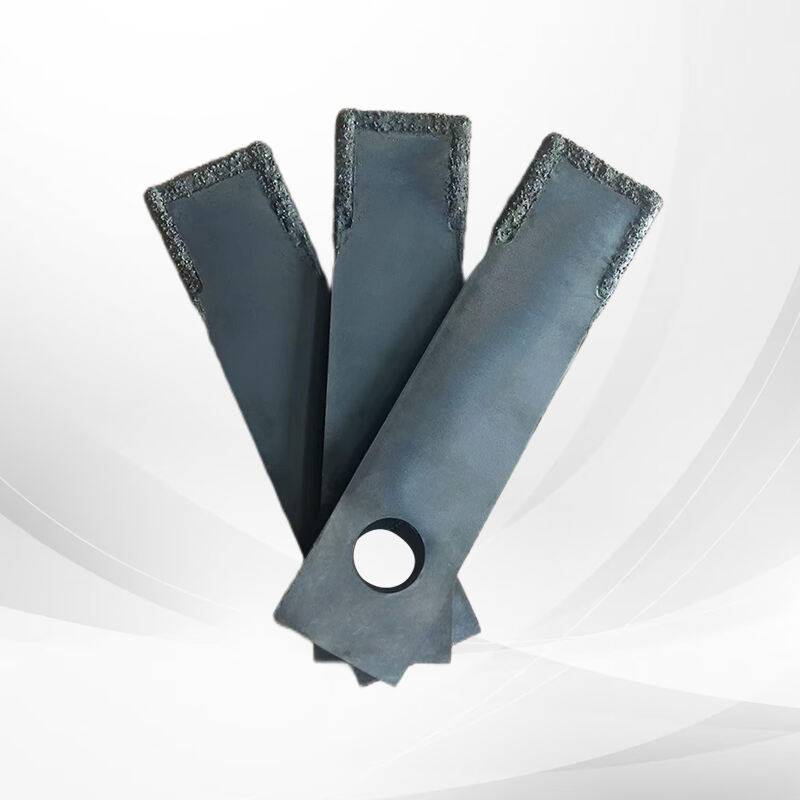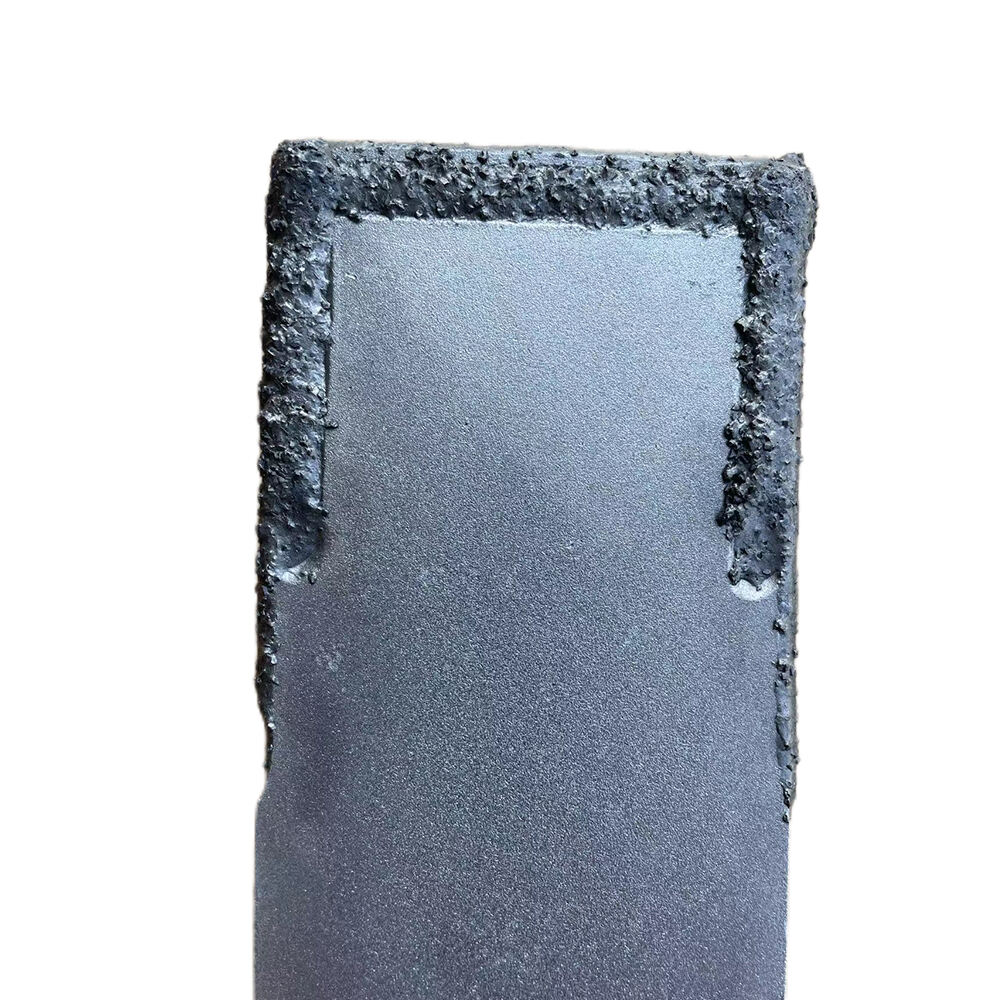Core Innovations in Modern Hammer Mill Beaters
Advanced Wear-Resistant Materials Explained
The last few years have seen some pretty impressive developments when it comes to materials that resist wear on hammer mill beaters. High chromium alloys along with various composite materials are now at the forefront of extending both the lifespan and performance of these machines. Maintenance teams report spending less money overall because parts don't need replacing so often anymore. Some field reports indicate around 30% lower maintenance expenses, though actual savings can vary depending on operating conditions. These advancements are making waves particularly in farming operations and waste management facilities, where equipment gets put through its paces day after day without letup.
The real game changer comes from adopting materials such as tungsten carbide. Take the hammer blade made by Changzhou Hammermill Machinery Technology for example. Their product has impressive hardness ratings reaching around HRC 70 to 75. What does this mean practically? The blades stay sharp much longer and resist wear better than standard alternatives. That's why so many industrial operations across different sectors prefer these tools when they need top notch performance day after day. Beyond just lasting longer, these improvements actually boost how effectively material gets crushed. Companies report saving thousands annually simply because they don't have to replace worn out parts so frequently anymore.
Self-Sharpening Cutting Edge Technology
Self sharpening tech represents a real game changer for those working with hammer mill beaters. What makes it work so well? Simple really these machines have built in systems that keep blades sharp all on their own, which means they perform at their best from day one right through until replacement time comes around. There are plenty of good reasons why operators love this feature. For starters, the cutting action stays efficient longer, and nobody has to spend hours grinding down dull edges anymore. Factory stats show somewhere around 20 percent reduction in downtime when using self sharpening models compared to traditional ones. That kind of improvement translates directly into money saved and production numbers that actually meet expectations rather than fall short because someone forgot to schedule maintenance.
Industries that have started using self-sharpening hammer mill beaters are seeing real gains in how much they can process at once. Take recycling facilities or grain processors for instance these places need very precise cutting all day long and the difference makes itself known pretty quickly. The machines run better overall and the end products just look nicer which matters when competing against other companies in busy markets. Companies switching to this tech find themselves able to get more done without constantly stopping for adjustments or replacements. Maintenance costs drop off too since the blades keep their edge longer than traditional ones.

Adjustable Beater Angles for Material-Specific Processing
The ability to adjust beater angles represents a major step forward in hammer mill technology, making it possible to process different materials effectively. When operators change how the beaters are angled, they basically tailor the crushing action for whatever substance is being processed. This customization makes hammer mills work better overall. Some research shows that proper angle settings can boost performance by around 15% across different operations. Recycling facilities and biomass processors have really benefited from this feature. They've seen their energy bills go down while still getting more output from their equipment. The difference isn't just theoretical either; many plants report noticeable improvements once they start adjusting those angles according to what they're actually working with.
Modular Systems for Rapid Maintenance and Replacement
The adoption of modular systems in hammer mill design has completely changed how maintenance and part replacements happen, making operations faster and smoother overall. With these systems, technicians can swap out critical parts quickly when needed, which cuts down on those frustrating periods when machines sit idle. Industry reports indicate that facilities using modular designs often see around a 40% reduction in maintenance time, meaning production stays on track even when unexpected repairs come up. Many different types of manufacturing plants across various sectors have already switched to this approach, proving why modular systems are becoming standard practice in today's crushing operations. Companies report not only lower maintenance costs but also better system reliability over time, making these investments worth the initial setup expense.
Airflow-Optimized Shapes for Efficient Material Discharge
Hammer mill beaters got a real upgrade with airflow-optimized designs that dramatically improve how materials get discharged. By creating better pathways for particles to move through, these new designs cut down resistance so stuff exits the grinding chamber much faster than before. Some studies indicate that these improvements can actually increase throughput anywhere between 10% to 15%, which means factories can handle bigger batches without breaking a sweat. Food processors and companies involved in heavy industrial grinding find this particularly valuable since they need their operations running at top speed most of the time. When manufacturers adopt these improved designs, they typically notice smoother day-to-day running, fewer unexpected shutdowns, and ultimately produce more goods within the same timeframe.
Impact Force Modulation for Consistent Particle Size
Modulation of impact forces makes all the difference when it comes to keeping particle sizes consistent throughout grinding operations. When beaters apply just the right amount of force at the right time, every batch gets processed the same way, which means better quality products regardless of what's being manufactured. Real world testing shows this works wonders in places where consistency matters most, think pharmaceutical companies needing exact dosages or feed mills producing livestock nutrition. What we get from this tech is not just reliability but something manufacturers can count on day after day. For businesses dealing with strict regulations and quality control measures, getting predictable results from their formulation processes isn't just nice to have anymore it's becoming essential for staying competitive in today's market.
Production Efficiency Gains Across Industries
Next generation hammer mill tech is making waves in how different industries get things done. When companies upgrade their old machines and add those fancy new features, they're seeing real time savings and better use of materials. The numbers back this up too many plants report around 20% higher output after switching over, especially in farming operations and factories. Take the Smith farm for instance they cut down on waste while producing twice as much feed for livestock. Businesses adopting this newer gear often find themselves spending less money overall and beating out competitors who haven't made the switch yet. For manufacturers looking to stay ahead, investing in these upgraded hammer mills isn't just about keeping up with trends it's becoming essential for staying profitable in today's markets.
Downtime Reduction Through Intelligent Engineering
New generation hammer mills incorporate smart engineering that cuts down on downtime quite a bit, which means better efficiency all around. These machines come equipped with predictive maintenance tech that actually knows when parts might fail or need attention before problems happen. Industry reports back this up too – plants using these systems see about 25% fewer unexpected breakdowns compared to traditional setups. Take food processing facilities for instance; many have reported much smoother day-to-day operations after switching over. The bottom line is that adding intelligence into these grinding systems doesn't just speed things up, it makes sure factories keep running reliably month after month while saving money in the long run.
Optimizing Animal Feed Production Efficiency
The latest hammer mill tech is really changing how efficient animal feed production can be, bringing all sorts of improvements to this part of agriculture. Better feed conversion rates come from getting the particle size just right and keeping it consistent throughout batches something that matters a lot when making sure livestock actually get proper nutrition. Farmers who've switched to these newer systems report noticeable jumps in both what they produce and the quality of the feed itself, sometimes even hitting around 20% higher efficiency marks. Big names in the feed manufacturing world have started jumping on board too, wanting to raise their game operationally speaking. What we see happening here isn't just about producing more stuff faster though there definitely is that benefit either. The overall quality factor means customers end up happier with what they buy, while businesses themselves enjoy healthier bottom lines as well. All told, this kind of technological progress shows why staying ahead of the curve remains so critical for anyone serious about running successful operations in today's competitive market.
Biomass Grinding Solutions for Biofuel Generation
Hammer mills are essential equipment in the biomass processing chain for producing biofuels. These robust machines break down organic materials into smaller particles that can be converted into energy, playing a major part in expanding the renewable energy market. Industry reports show that newer hammer mill designs actually cut down on environmental impact while boosting profits for biofuel producers. Many facilities report better results when they upgrade to modern grinding systems, often seeing noticeable gains in how efficiently they convert raw material to usable fuel. Real world examples across different green energy projects consistently show that hammer mills work well for processing biomass feedstocks. Their ability to handle diverse materials makes them indispensable tools for anyone serious about turning waste into valuable energy resources. As the world continues pushing toward cleaner power alternatives, hammer mills remain at the forefront of making biomass energy both practical and economically viable.
For further insights and real-world applications, I recommend exploring detailed product descriptions and company case studies such as those from Tietjenâs range of hammer mills, renowned for their robust construction and efficiency.
Future Trajectories in Crushing Technology
The future of crushing technology is poised to transform various industries with innovative advancements. As we look ahead, there are several promising developments on the horizon.
Enhanced Automation: Automation is set to revolutionize crushing processes, offering improved efficiency and precision. Advanced control systems and AI integration will enable continuous monitoring and adjustments to ensure optimal performance.
Sustainable Practices: Sustainable technologies are gaining traction. Manufacturers are focusing on eco-friendly solutions, reducing energy consumption, and minimizing waste. These approaches not only benefit the environment but also offer cost savings.
Advanced Materials: The development of new materials is enhancing equipment longevity and performance. High-strength alloys and composites are being utilized to withstand tough conditions, leading to reduced downtime and maintenance costs.
By embracing these trajectories, industries can achieve more efficient operations, align with environmental goals, and boost productivity.
FAQs
1. What materials are commonly used in modern hammer mill beaters?
Common materials used in modern hammer mill beaters include high chromium alloys and tungsten carbide. These materials offer enhanced wear resistance and extended longevity of the beater.
2. How does self-sharpening technology benefit hammer mills?
Self-sharpening technology in hammer mills ensures continuous sharpness of the beaters, reducing downtime and labor costs associated with manual sharpening. This improves overall cutting efficiency and productivity.
3. What is the role of adjustable beater angles?
Adjustable beater angles allow operators to customize the crushing operation to fit specific materials, enhancing efficiency and effectiveness in processing various types of materials.
4. How do modular systems enhance hammer mill operations?
Modular systems in hammer mills enable quick swapping of components, drastically reducing maintenance time and downtime, thus improving overall productivity.
5. How are hammer mills beneficial in biofuel production?
In biofuel production, hammer mills help in reducing biomass to usable forms through efficient grinding processes, leading to improved energy conversion and sustainability in production operations.
Table of Contents
-
Core Innovations in Modern Hammer Mill Beaters
- Advanced Wear-Resistant Materials Explained
- Self-Sharpening Cutting Edge Technology
- Adjustable Beater Angles for Material-Specific Processing
- Modular Systems for Rapid Maintenance and Replacement
- Airflow-Optimized Shapes for Efficient Material Discharge
- Impact Force Modulation for Consistent Particle Size
- Production Efficiency Gains Across Industries
- Downtime Reduction Through Intelligent Engineering
- Optimizing Animal Feed Production Efficiency
- Biomass Grinding Solutions for Biofuel Generation
- Future Trajectories in Crushing Technology
- FAQs
